- News
- Reviews
- Bikes
- Accessories
- Accessories - misc
- Computer mounts
- Bags
- Bar ends
- Bike bags & cases
- Bottle cages
- Bottles
- Cameras
- Car racks
- Child seats
- Computers
- Glasses
- GPS units
- Helmets
- Lights - front
- Lights - rear
- Lights - sets
- Locks
- Mirrors
- Mudguards
- Racks
- Pumps & CO2 inflators
- Puncture kits
- Reflectives
- Smart watches
- Stands and racks
- Trailers
- Clothing
- Components
- Bar tape & grips
- Bottom brackets
- Brake & gear cables
- Brake & STI levers
- Brake pads & spares
- Brakes
- Cassettes & freewheels
- Chains
- Chainsets & chainrings
- Derailleurs - front
- Derailleurs - rear
- Forks
- Gear levers & shifters
- Groupsets
- Handlebars & extensions
- Headsets
- Hubs
- Inner tubes
- Pedals
- Quick releases & skewers
- Saddles
- Seatposts
- Stems
- Wheels
- Tyres
- Health, fitness and nutrition
- Tools and workshop
- Miscellaneous
- Tubeless valves
- Buyers Guides
- Features
- Forum
- Recommends
- Podcast
review
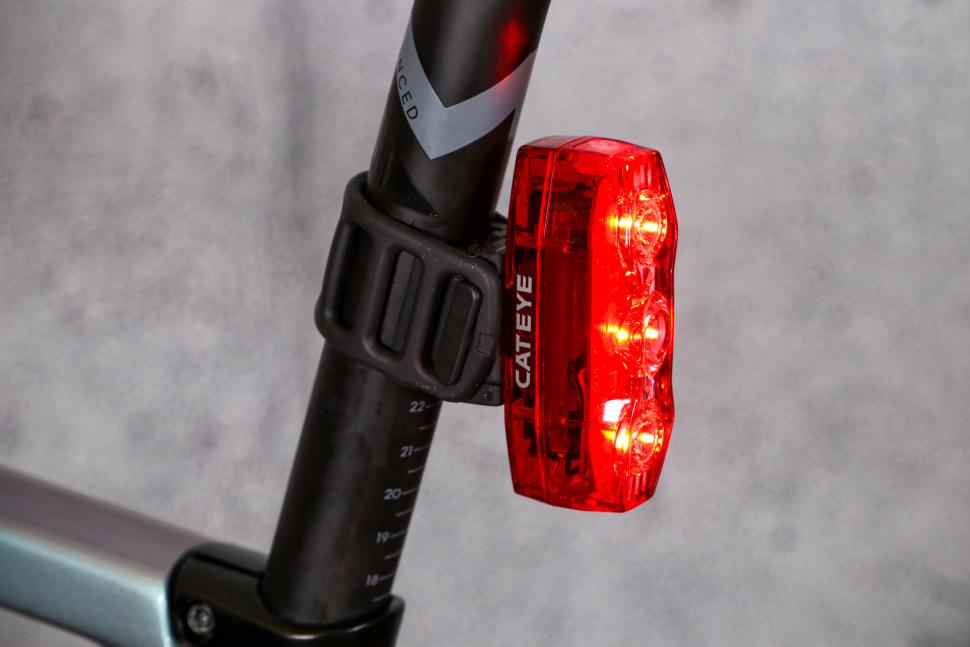 Cateye Viz 450 Rear Light
Cateye Viz 450 Rear Light£49.99
VERDICT:
It's very good but overkill for most – just because you can have a 450-lumen rear light doesn't mean you should
Cateye lights tend to be solidly made and last for years
Very high output when you really need that...
...other effective (and less offensive) modes for when you don't
Generally easy to use, fit and live with
Overkill for most use-cases, and most will find all the illumination they need in cheaper models
Weight:
67g
Contact:
At road.cc every product is thoroughly tested for as long as it takes to get a proper insight into how well it works. Our reviewers are experienced cyclists that we trust to be objective. While we strive to ensure that opinions expressed are backed up by facts, reviews are by their nature an informed opinion, not a definitive verdict. We don't intentionally try to break anything (except locks) but we do try to look for weak points in any design. The overall score is not just an average of the other scores: it reflects both a product's function and value – with value determined by how a product compares with items of similar spec, quality, and price.
What the road.cc scores meanGood scores are more common than bad, because fortunately good products are more common than bad.
- Exceptional
- Excellent
- Very Good
- Good
- Quite good
- Average
- Not so good
- Poor
- Bad
- Appalling
As the name suggests, Cateye's Viz 450 rear light can throw out an extremely bright beam, although the full power is reserved for an intermittent flash in the 'Daytime Hyperflash' mode. In some specific use-cases you might appreciate this amount of power, but for most cyclists it is overkill and potentially a little provocative. There are more socially acceptable modes, but you could also just buy a less powerful, cheaper light.
I've tested a whole load of Cateye lights over the years and I really rate the brand – its lights aren't the cheapest (but certainly not the most expensive either) and they tend to be well-made units that chuck out lots of light and last for years.
> Find your nearest dealer here
Cateye's previous Rapid range of rear lights offered excellent all-round visibility using a line of LEDs that were visible from the sides and the rear. I still have some that I tested six years ago and they still work fine, which is a decent innings – other brands' lights have not lasted nearly as well.
They were less effective in terms of range than some lights that used lenses to focus a beam back down the road. Whether that matters depends on your environment – in an urban area I'd choose good all-round visibility over being seen by someone half a mile away.
With the Viz range, Cateye combines the all-round visibility from its earlier Rapid models with a focused beam that will have you seen from hundreds of metres back. We've already tested the cheaper 100 and 300-lumen models, with the 150 to come, and this, the Viz 450, is the Big Daddy of the range, designed to ensure your safety on the most unfriendly of A-roads and/or to aggravate the most taxi drivers possible.
Mount
In terms of design, use and lighting modes, the Viz 450 shares almost everything with its less powerful brethren. Steve thought the new Snap System did a good job of holding the Viz 300 on the bike but had parts that could get lost if you take it off in an unlit shed. Having used this Viz 450 for a few weeks and having, admittedly, the luxury of a well-lit garage, I don't really think it's an issue.
There are four pieces – the light unit itself, which has a square attachment point on the rear, a rigid nylon bracket with a slot into which the light can slide in four directions, allowing you to mount it vertically or horizontally. I know, right? The correct answer is of course vertically because Aero. A rubbery block then pushes onto the back of the nylon bracket and locks the light into position in that bracket. This block is the piece that is pushed up against your seatpost and can accommodate round and aero posts (provided they're not overly deep) and does a reasonable job with D-shaped comfort seatposts too.
The final piece is the stretchy rubber ladder strap, which I think is a nicer option than the basic o-ring used a lot on rear lights, although Shaun thought the opposite when testing the Viz 100! This is retained on the nylon block via a tongue on one side of that block that means it doesn't just fall off when you remove the light; I found this works fine.
Cateye offers a range of optional mounts too, including a clip that you could use on a trouser pocket or bag (for the princely sum of £2), and an adaptor using its venerable FlexTight design.
Modes
The last rear light I tested had nine modes, so the four available here are modest by comparison but are likely sufficient for almost everyone. It's the usual 'long press for on and off, short press to cycle through modes' and it switches on in the mode you were in when you switched it off. When the battery gets low, it switches to the least thirsty mode to give you the best chance of getting home.
There are five LEDs, of which three sit behind Cateye's OptiCube lenses, and two are unfocused. The Constant mode is the thirstiest, running for 5 hours and 20 minutes and using just the three focused LEDs to generate a claimed 40 lumens. Such is the effectiveness of the lenses that this 40 lumens feels like more than enough and is very difficult to look at directly from close up. The Flashing mode is about 3Hz, alternating between the OptiCube LEDs and the other two. It'll run for a claimed 65 hours and also outputs 40 lumens.
The Group Ride mode unexpectedly ups the power to 130 lumens, but in a pulsing rather than flashing pattern apparently intended not to be too irritating to your riding mates. It uses all five of the LEDs, with one, two or three of the OptiCube LEDs being on at any given point. Having sat behind a friend using this light as part of the testing, I'd agree that the lack of strobe effect is definitely a blessing, but it still feels like overkill – in my view, a single one of the bright LEDs would be ample and I'd prefer it to be on constantly, which should deliver 15 hours' run–time.
> Buyer’s Guide: The best 2021/22 front lights for cycling
You only get the full beans in the Daytime Hyperflash mode, and only for the briefest of flashes. This mode name has been around for a while but what it does here is different to Cateye's older lights. It used to mean 'always on, with brighter flashes' and I thought it was a great choice for daytime running or well-lit busy night-time environments. Here it goes Full Rave with all five LEDs flashing at different speeds and the full 450 lumens deployed a little over once per second.
Steve described this mode on the Viz 300 as luridly chaotic and it is – it's not just the bonkers output of those bright flashes but all the various rapid strobing that's going on at the same time, which makes this hard to ignore. Following behind this light in the daytime, I found that from around 100 metres it was very effective at being impossible to miss (and not overly bothersome) but from 10 metres it was pretty irritating. I didn't ride with this mode at night, so cannot report the thoughts of other road users. I would only use this mode if I was doing a lot of riding on fast A-roads in the daytime, and it would make me feel safer in that specific environment.
> Buyer’s Guide: 22 of the best rear lights for cycling
The most startling thing about this light is how bright a mere 40 lumens can be when funnelled through effective lenses. The constant mode is very bright when seen from 300 metres away at night, and vastly more so than the higher lumen output from the lens-less Knog Blinder Skull. On this basis, unless your commute takes in a lot of fast daytime dual carriageways (my sympathy), I just don't think a case can be made for needing more than 10 times this output, as here.
Happily, there are less bright, less expensive options from the same range, and for my money the Viz 100 at half the price would be all the light I'd need.
Verdict
It's very good but overkill for most – just because you can have a 450-lumen rear light doesn't mean you should
road.cc test report
Make and model: Cateye Viz 450 Rear Bike Light
Size tested: 450 lumens
Tell us what the light is for, and who it's aimed at. What do the manufacturers say about it? How does that compare to your own feelings about it?
Cateye says:
Super bright 450 Lumens eye-catching visibility day or night.
When you absolutely, positively need to be seen, day or night, rain or shine, trust CatEye's brightest rear safety light. The ViZ450 features 5 LEDs, 300-degree visibility, OptiCube™ lens technology, and makes sure you stand out with the power of Daytime Hyperflash™ mode.
Tell us some more about the technical aspects of the light?
Cateye lists:
5 LEDs (450 lm)
Highly visible during daytime
300 degree visibility
Long rear beam projection
OptiCube™ lens technology
Lithium-ion rechargeable battery
USB rechargeable (Micro-USB cable included)
Low battery indicator
4 modes *Charging time: 3.5h
Mode memory function
Battery Auto Save (The mode automatically changes to flashing when the battery power gets low.)
New seat post bracket SP-15 which fits contemporary (kammtail) aero seatpost
Snap System™
Rate the light for quality of construction:
9/10
Solid, feels more robust than some earlier Cateye lights.
Rate the light for design and ease of use. How simple was the light to use?
8/10
No issues. Standard one-button operation. A function over form light – using high-output LEDs and effective optics to be as visible as possible.
Rate the light for the design and usability of the clamping system/s
8/10
The Viz range marks a change from some of Cateye's earlier rear lights which just used an o-ring. The arrangement here works fine for me; others have complained about the possibility of parts of it falling off when you remove the light to charge.
Rate the light for waterproofing. How did it stand up to the elements?
8/10
No issues. Effective bung seals the micro USB charger port.
Rate the light for battery life. How long did it last? How long did it take to recharge?
8/10
Run-times from 5hr to 65hr depending on mode. Charges in 3.5hr on a 0.5A charger, faster on a more powerful charger.
Rate the light for performance:
10/10
If by performance we mean "how visible is this light" then this has to score highly. Depending on the circumstances, it's either highly effective or quite offensive. But you don't have to use the full 450lm.
Rate the light for durability:
8/10
Most of the Cateye lights I've reviewed several years ago are still going strong – they tend to be among the better brands for longevity. The battery isn't replaceable, though, so once it's lost its effective capacity, you'll be looking for a new light.
Rate the light for weight:
4/10
Among the heavier of the rear lights we've tested recently, but by an amount that arguably doesn't really matter. Lighter lights tend to be less bright, or with shorter run-times, so it's a simple trade-off if you want all the lumens.
Rate the light for value:
5/10
Hard to quantify – it's about in line with other lights with 300+ lumens (and you can spend significantly more) but it's much less clear that you really need to spend this much to get this many lumens.
Tell us how the light performed overall when used for its designed purpose
It's an extremely effective light at night and in daylight. Very good all-round visibility, and lenses that carry the output a really long way down the road. In daylight, it is more attention-grabbing than any other light I've used.
Tell us what you particularly liked about the light
Combination of wide-angle visibility and lenses to carry a long distance. Solid construction, long run-times on the more sensible modes.
Tell us what you particularly disliked about the light
It would be nice to move away from micro USB given that phones are all USB C now. The new Hyperflash mode is too fast and flashy for my liking – I could believe that it could induce epilepsy.
How does the price compare to that of similar products in the market, including ones recently tested on road.cc?
You can pay a lot more than this for, for example, the Exposure Blaze, which has a lower peak output but uses some clever sensing capabilities to adjust its output to the environment and if you're being followed. It's definitely a better light than the lens-less Knog Blinder Skull, which costs a tenner less. Probably the closest match is the Ravemen TR300 which is the same price, with a lower output and less side visibility. I think the Viz 450's toughest competition comes from its own little brothers, the Viz 100, 150 and 300.
Did you enjoy using the light? It is good to feel visible on your bike – but this also feels a bit provocative, which I didn't enjoy so much.
Would you consider buying the light? I'd definitely buy the 100-lumen version.
Would you recommend the light to a friend? I'd recommend the 100-lumen version.
Use this box to explain your overall score
This is a really effective light at getting you seen, but – a bit like popping to the supermarket in a car with 2000 horsepower – it's debatable whether there's a real need for this much power. The excellent all-round visibility, robustness and expected long life make this a high score, but for me, I'd score the cheaper Viz models higher as I think they have the balance between price and output better set than this monster.
About the tester
Age: 42
I usually ride: On-one Bish Bash Bosh My best bike is: Rose X-Lite CRS
I've been riding for: Over 20 years I ride: Most days I would class myself as: Expert
I regularly do the following types of riding: road racing, time trialling, cyclo cross, commuting, touring, club rides, sportives, general fitness riding, fixed/singlespeed, mtb,
Jez spends his days making robots that drive cars but is happiest when on two wheels. His roots are in mountain biking but he spends more time nowadays on the road, occasionally racing but more often just riding.
Latest Comments
- Keesvant 4 sec ago
I do not believe that Cancellara used motor doping. Those small motors were just not developed by then....
- wtjs 52 min 43 sec ago
Fair enough:...
- Rendel Harris 58 min 39 sec ago
I totally agree, I started cycling around the same time as you and I well remember poring over the unattainable gear in the Ron Kitching and...
- SecretSam 2 hours 3 min ago
Usual ugly Pinarello, bumps and curves where they aren't needed. And, according to Mapdec, not well built.
- Rome73 4 hours 10 min ago
That's not strictly true - Reform will legalise immigrant baiting, trans bashing and tar and feathering of anyone woke. Loads of fun for all the...
- Rendel Harris 3 hours 57 min ago
What's a "legitimate cyclist" please? Someone who doesn't conform to your arbitrary norms? At the age of 56 I admit that you have 13 years more...
- mattw 18 hours 46 min ago
This risks turning me into a hanger and flogger....
- Spangly Shiny 1 day 26 min ago
I had the pleasure of owning two of the featured builders here, in my history. When I joined the Army in 1971, I took with me my curly Hetchins:...







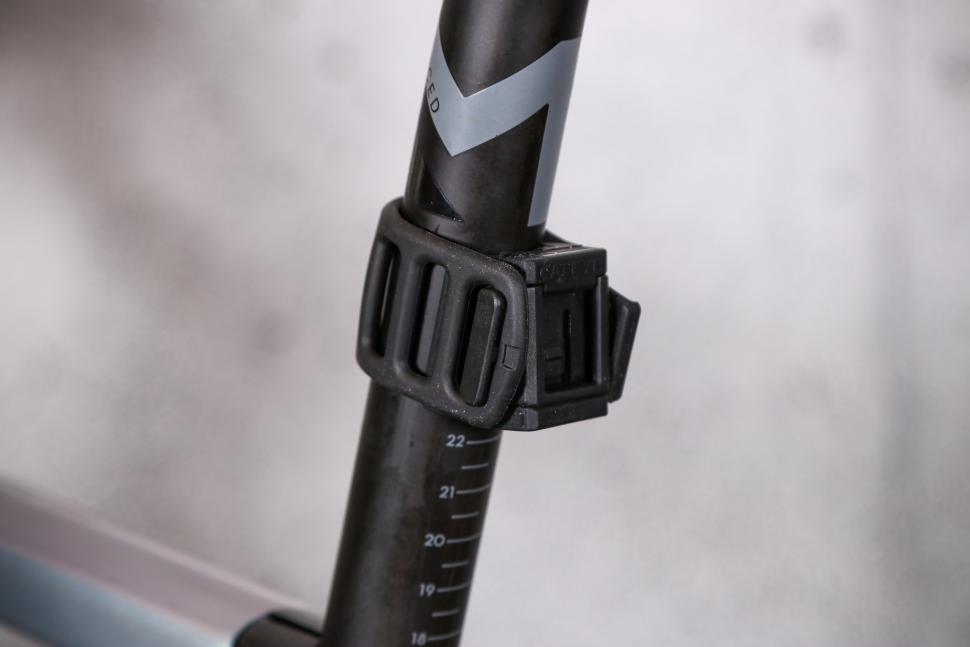

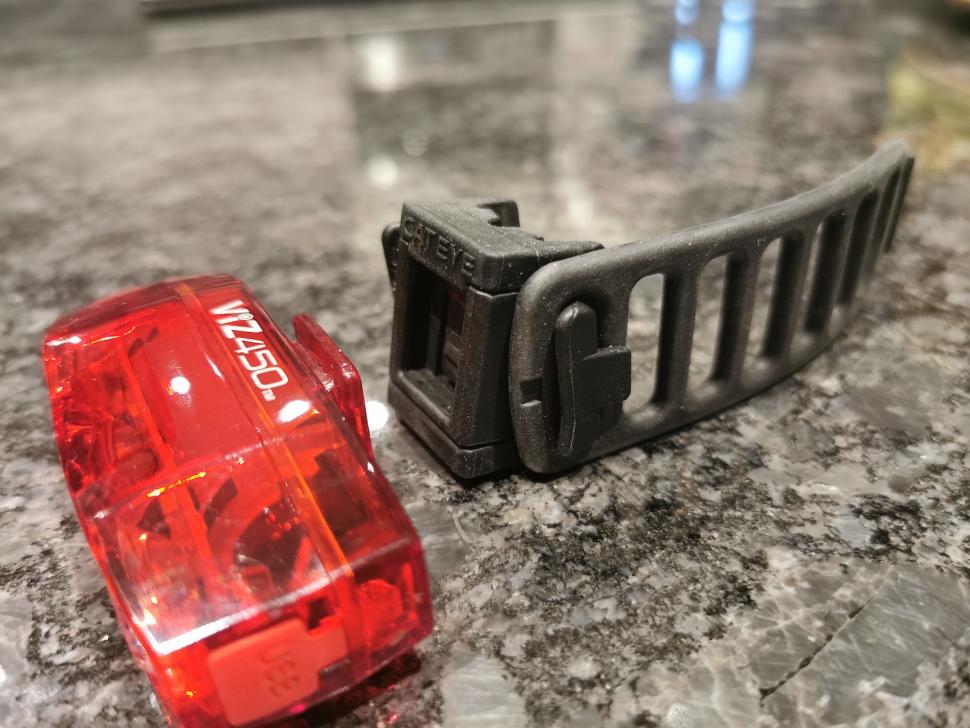


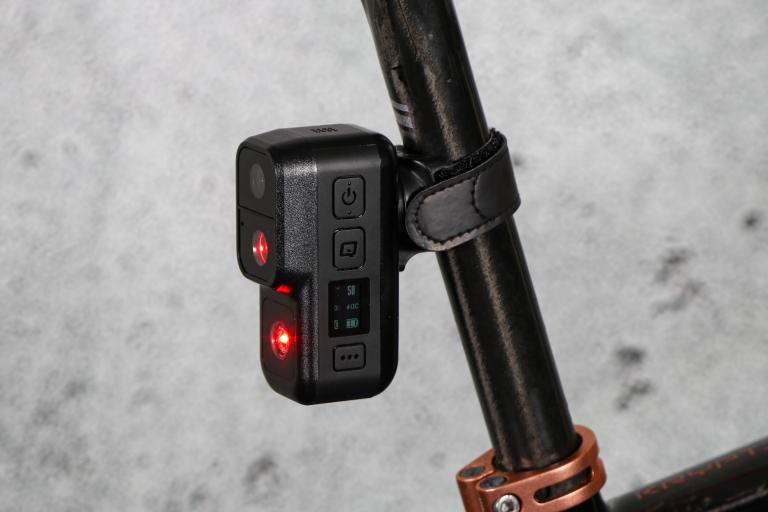
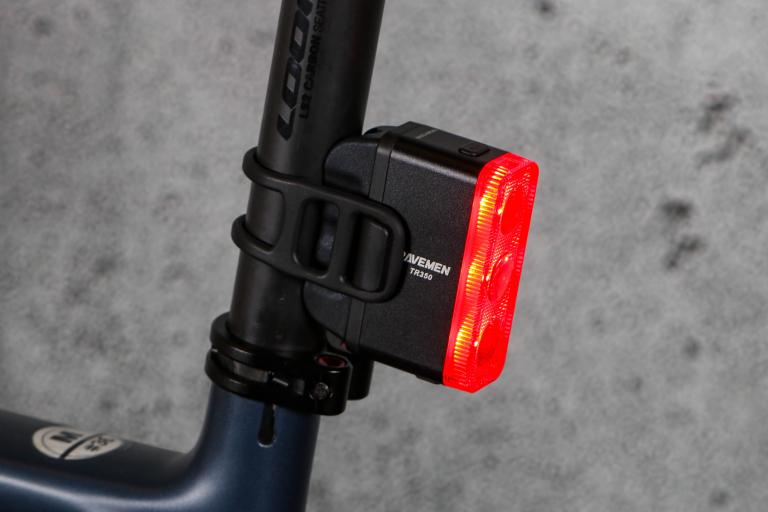

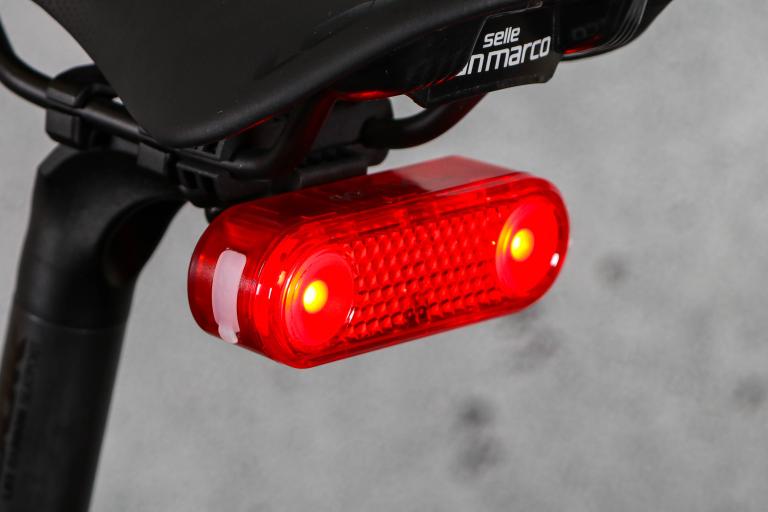
Add new comment
1 comments
If 450 lumen is the answer, what is the problem?
I did get the 300 for low bright sun on nsl, but even that is pushing it at the 100 lumen mode.